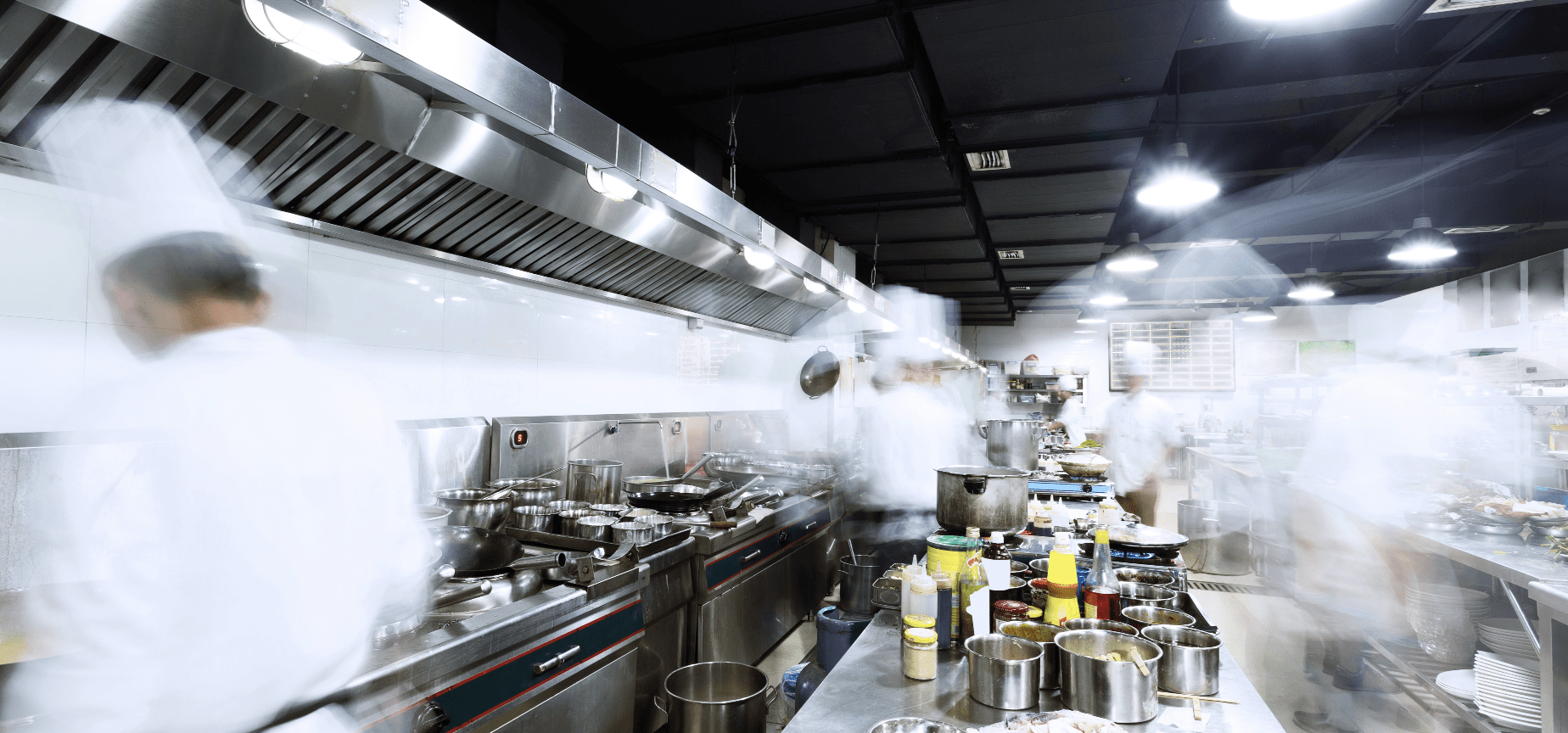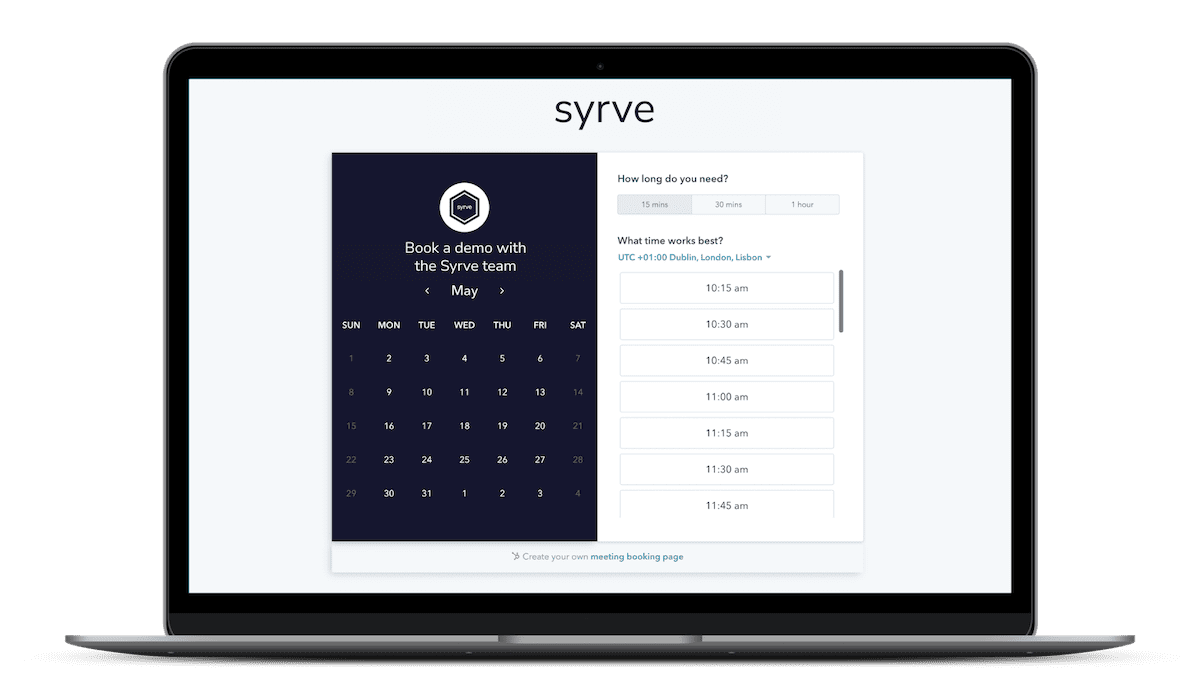Although most successful restaurant teams thrive on the buzz and banter of busy service, the demands of a high-pressure environment sometimes lead to stress and arguments. And it's often easy to blame the kitchen when issues arise. But it could simply be that your team is missing an essential ingredient — the right tech.
What Causes Kitchen Friction?
Kitchen friction is often the result of operational failings such as production bottlenecks, food delays and ordering mistakes. In a typical scenario, a server will chase a busy chef for an order, perhaps following a customer complaint, which interrupts the chef's workflow. Angry words are then exchanged, leaving both parties feeling angry and frustrated.
In many cases, the manager will try to diffuse situations by placating the customer, instead of pinpointing the actual cause of the problem. As a result, the same issue occurs over and over again.
Employing calm, well-rounded individuals will help. But having the right personalities on each shift isn’t going to be a sustainable solution. Even the best staff won’t be immune from issues that escalate beyond their control, impact service, and trigger customer meltdowns.
So the question arises, should you just accept that mistakes and inefficiencies, whether frequent or not, are just part of running a F&B enterprise? The resounding answer is, no.
What you need is next-generation restaurant technology that supports your entire process — from before diners arrive, to long after you close up for the night. In particular, the kitchen needs to be ‘plugged in’ to your system.
Crucially, the right tech will provide the planning, communication, transparency, visibility and direction that front-of-house and back-of-house staff crave, so they can work as one team.
7 Friction Points You Can Fix With Tech
With an intuitive, all-in-one system that connects your kitchen operations to your Restaurant POS system, you can eliminate all critical points of failure. Here are seven of the most common:
(1).jpg?width=636&height=424&name=Incontent1%20(2)(1).jpg)
1. Understaffing
Understaffing is a common issue in the restaurant industry that puts excessive strain on servers and kitchen staff. Sometimes necessitated by rising labour costs, understaffing can also be the result of poor forecasting.
Next-gen tech makes it easier to schedule shifts to support your restaurant’s smooth-running. With the help of AI-driven forecasting, you can match staffing levels with demand so that you've got a suitable-sized team in place at all times. The latest platforms also adjust your labour costs as you create each shift, helping you to avoid going over budget.
2. Poor Communication
Misunderstandings about orders between front and back of house are another major flashpoint. They're often brought about by a lack of communication and transparency.
These issues can be easily solved with a restaurant management system that integrates a kitchen display system with the actual POS terminals. Your servers can check the progress of each order without having to conduct chase-ups.
In turn, your chefs can see which orders need to be cooked right away, which ones belong to the same order and which items need to be served at the same time.
(1).jpg?width=636&height=424&name=Incontent7%20(3)(1).jpg)
3. Stockouts
Having to tell a customer that a dish is no longer available isn't particularly pleasant for a server, especially if that customer becomes frustrated. Blame is often directed at the kitchen. But the problem tends to arise because of poor inventory management and a lack of forecasting.
Next-gen tech allows you to manage your restaurant inventory in real time. All orders at point of sale are recorded as well as kitchen ingredient usage and delivery. Stock levels are then updated accordingly. To ensure even great stock level accuracy, staff can complete regular stock checks easily using tablets and mobile devices.
This means you can avoid running short of ingredients at critical moments. In fact, the system will even create and send timely purchase orders automatically for you, based on forecasts and supplier delivery schedules. This approach saves you from blind ordering and careless bulk buying.
4. Orders Arrive All At Once
It’s a common scenario for waiting staff to move between tables and keep taking orders before they have a chance to queue up at the POS terminal and key them into the system. The problem here is that all the orders arrive in the kitchen at once, instead of following a natural flow. Immediately, this puts chefs on the back foot.
The problem can be alleviated with Smart Table Service. Using a tablet, smart-phone or dedicated device, staff can take accurate orders from customers and then send them to the bar or kitchen in a single click before they move to the next table. Orders are no longer delayed so the kitchen can get into a steady rhythm and produce meals on time.
(1).jpg?width=636&height=424&name=Incontent3%20(2)(1).jpg)
5. Chefs Struggle to Keep Up With Orders
When your chefs are struggling to keep up with the orders, it can be a sign, among other things, that they're working off inadequate prep plans. Miscalculations relating to the order in which items should be prepared or prioritised, as well as insufficient time allocation for each preparation stage have the potential to cause bottlenecks which raises the pressure on servers.
Next-gen restaurant management systems put an end to this kind of scenario. Thanks again to AI-driven forecasting, the latest platform estimate the quantity of ingredients required according to demand, also factoring in micro-processes for time calculations such as gathering produce from storage, washing and cutting vegetables and allowing meat to thaw.
To further assist in preparation, items can be grouped and arranged in a particular order. With this kind of system in place, kitchen staff can prepare dishes in time and without your oversight.
6. Orders Arrive From Different Channels
Many restaurants now take orders from multiple channels as well as from seated diners. Customers may be ordering from different delivery aggregators, apps or websites. As well as complicating the ordering process, there's the added risk of them being lost or improperly prioritised by kitchen staff. To make matters worse, most third-party delivery aggregators provide their own ordering tablets which can result in errors.
But with a next-gen system, you receive all your orders via one till which are then channelled through one funnel directly into your system. From that moment, kitchen staff have access to all the order information they need via a KDS including time-to-cook data, cooking time countdowns and production statuses.

7. Lack of Managerial Oversight
Any of the problems we’ve described have the potential to create major issues and put you in a near-impossible situation. It's quite easy for managers to spend most of their time fire-fighting various issues and get sucked into staff disputes, without actually getting to the core of the problem
However, next-gen tech provides managers with real-time oversights of their entire kitchen operation. Every stage of preparation and production can be monitored as well as individual shift performance. For a complete picture, next-gen platforms will also include a host of revealing KPIs to help streamline your kitchen including:
- Guest Waiting Times
- Kitchen Prep Hours
- Cooking Start Delays
- Cooking Times
- Cooking Delays
- Waiter Serving Time
- Waiter Serving Delays
From this data, processes can be fine-tuned, star players can be praised and struggling employees supported with extra training, so your team keeps improving.
It’s time to ‘plug in’ your kitchen — and everything else
The kitchen is at the sharp end of the restaurant operation. As a result, it can become perceived as the source of friction and a ‘weak link’. In truth, problems often occur because the kitchen has been kept out of the loop. Now’s the time to make sure it’s plugged into your system.
Ultimately, every team in a restaurant needs the best kitchen management system to keep them connected, informed, on task, and supported at every step. Next-generation tech from Syrve is the answer.



